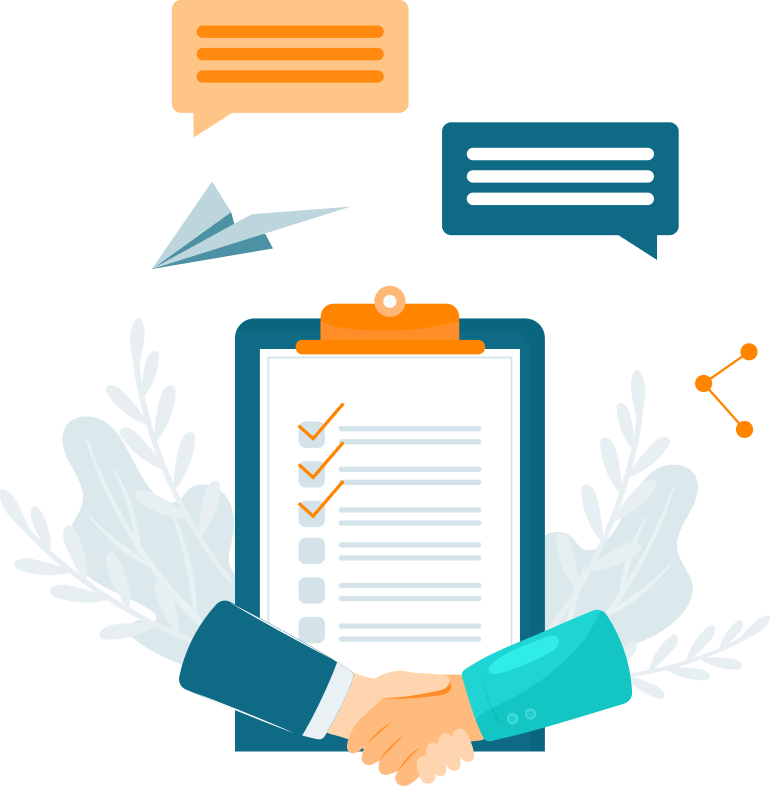You often hear search marketing firms promising to get someone on the first page of Google instantly, but they don’t always reveal that it involves paid ads.
While ads are a legitimate way to get to that coveted page 1 visibility, there are other ways to accomplish it through search engine optimization.
Getting to the first page of Google isn’t impossible and it’s not just a marketing pitch. We’ll go through some of the tried and true methods that will pay off if you have a little patience.
How Much Difference Is There Between Page 1 & 2 on Google?
Google has about 92% of the global search engine market share, which is why you’ll hear people talk about getting to the first page of Google, and not Yahoo or Bing. Although the optimizations that help you climb the rankings on Google will naturally help you on other search engines as well.
Back in the early days of the internet, it wasn’t unusual for people to look through several pages of search results. The internet was new and shiny, and advertisers hadn’t gotten ahold of it yet. So, you never knew what gems you might find.
But over the last two decades, the internet has gotten a much more crowded and attention spans have become shorter. People want to find what they need quickly, and often don’t venture past page 1 of a search result.
This is especially true if someone is looking for a local business on their smartphone. They want to find an option and be able to click to reach them in seconds, not minutes.
How much difference is there between being on page 1 or any other page on Google? Here are a few statistics:
- 95% of searchers never click beyond page 1 of the Google search result.
- When moving from page 1 to page 2, traffic drops 140%.
- The top 3 organic search results get 61% of the clicks.
As you can see, there’s not much potential traffic left if you don’t rank a mention on page 1. You could have a wonderful page 2 spot, right at the top, but there’s a huge chasm between that last page 1 spot and page 2.
Tried and True Methods to Get to Page 1 on Google
Anyone that promises you an instant page 1 SEO listing is pulling your leg. Search engine optimization takes time, though it is getting faster than it used to be.
Google has increased the speed of the entire ranking process to keep feeding fresh and relevant content to searchers and keep its dominance in the search market.
This has both positives and negatives:
- Positive: You have a better shot at gaining a first-page position on Google because results change faster than they used to.
- Negative: Once you gain that coveted spot, you need to continue optimizing to keep it.
SEO is part of what we do all day at Tech Blog Builder, so we’re going to let you in on some of our secrets to getting IT business clients in different cities and countries onto the top page of Google for relevant keyword searches.
Ads Are the Fastest Way… But
Of course, paying for a high-ranking spot on Google is a way that you can show up on page one same day. This can be helpful for new businesses or those that need time to work on SEO.
But ads can be costly, especially if there is a lot of competition in your area for IT services. There are also challenges with being able to advertise at all since Google arbitrarily blocks certain types of IT-related advertising due to all the fraud out there for things like remote support and virus removal services.
Another caveat with using paid ads on Google is that ads only receive about 10% of the page 1 clicks. The rest go to organic search results, so that’s really where you want to put your time and attention.
Study Those on Page 1 of Google for Local Searches
Most IT businesses are going to be working to get seen for local searches, ones that use “it services + city name” or “msp support + city name.”
To get clues as to what you should do to rank on page one, search for some keywords you’re trying to rank for and research your competitors that are appearing on page one. Obviously, they’re doing something right, so you can learn from that.

Things to look for in your research:
- How many times the keyword you used to find them is showing up on the landing page. (You may find you need to increase keyword density)
- View the webpage source code to look for the meta tags (descriptions, keywords, etc.)
- See how they’re using H1 and H2 tags (headers & subheaders) for ideas.
- Review interlinking within their site (is the page linking to other pages on the same domain?).
Understand the Difference Between Page and Site SEO
When a person says, “I want my website to rank on page 1 of Google,” it’s not really their website that is ranking, it’s a web page. A search result brings up a single page on your website (though you can fold other results underneath using structured data).
So, you’re optimizing by page for a ranking, but as your overall pages rank, your site gains authority which improves the chances of all pages on your site getting higher positions.
Why is this important to understand?
When choosing keywords to optimize on your site, you don’t want every blog post or service page to use “MSP services Charlotte” because they’ll in effect be competing against each other for search positions.
Instead, you want to use a strategy where you are slightly varying your keywords on each page of your site, so they compliment each other.
For example, you might use a strategy like this:
- Cybersecurity page: “charlotte cybersecurity” and “charlotte IT security provider”
- Ransomware blog post: “charlotte ransomware removal”
- Managed services page: “msp support charlotte” and “msp services charlotte”
- Computer repairs page: “computer repairs charlotte”
Add Your Site to Local Directories
95% of the time, a Yelp result is present in the top 5 results for searches that include a city and category of business. You can often get your MSP business visible on page 1 of Google faster through a local citation.
Local citations are all those different directories out there like Yelp, Google My Business, Manta, and others. Because of the site authority these websites have, their listings often show up on page one of a search result.
Google My Business is particularly helpful for getting your IT business showing up on page one and in the coveted “map pack” which is the main place local searchers look.
The average company on GMB gets 59 actions from their listing per month. An “action” can be a website visit or phone call.
Use SEO Best Practices
SEO is more than just putting one keyword on a page and hoping for the best. It includes expertly mixing multiple elements designed to get your page noticed by Google.
Ultimately what you want is to have Google think your page is a great match for a particular keyword, a better match than most other sites, so you can gain a spot on page 1.
You can find more details on SEO best practices here. Some of the basics that you want to apply to every webpage are:
- Choose 1-2 main keywords and 2-3 complimentary keywords.
- Shoot for a keyword density of about 1-2% (use the keyword 1-2 times per every 100 words)
- Use your main keyword in your page URL and Title
- Use a plugin for SEO (such as Yoast)
- Use keywords in alt image tags
- Link to pages inside and outside your domain
- Write (or have written) quality page content that’s easy to read
Use Longtail Keywords
If you’re not optimizing for longtail keywords, then you could find your page languishing beyond page 1 and be missing a majority of the searches.
70% of Google searches use what are considered “long tail” keywords. These are keywords that are in the 3-4 words+ range. People use them to get more relevant search results.
For example, if someone just uses the term “computer repair” they could end up with results for repair shops hundreds of miles away from where they’re located. So, instead, the more likely search will be “computer repair cleveland” or even “cleveland pc repair broken keyboard.”
Most IT businesses will always want to be using longtail keywords because their city or service area will be included with other search terms.
Using longtail keywords also helps you in optimizing for different keywords on each page of your site.
Add Content to Your Site Regularly
Google likes to see websites that are “alive” rather than stagnant. What this means in the search engine world is that a website is adding relevant content regularly. Sites that haven’t had new content added in 1-2 years are much less likely to be seen as relevant to Google’s search bots.
Having an IT business blog is a great way to ensure you have fresh content going up on your site regularly. Choose a schedule for your blog posts, such as 2-4 each month, and use SEO optimization techniques on all of them.
You’ll see a compound effect as you add more SEO-optimized content that will lift all your pages in the search rankings.
Learn How to Get In Featured Snippets
One way to not only grab a first-page spot on Google but also get the very first position on the page is to optimize for featured snippets.
Featured snippets show up at the very top of a search result and are designed to give quick helpful answers to the search query.
Be mindful about adding bullet lists when you can to your site pages, as these are often chosen for featured snippets by Google. Another common thread is adding a question and answer somewhere in your content.
Here’s an example of a Tech Blog Builder customer that earned a coveted 1st position on the 1st page of Google thanks to being chosen for a featured snippet.

Yes, You Can Get to Page 1 on Google, if You Put in the Time & Effort
It’s not impossible for a small IT business to earn a spot on page 1 of Google’s search results. It just takes some time and a commitment to following SEO best practices. The benefits of being seen by over 90% more searches can make a huge difference in leads and revenue.
Do you have any tips on reaching the first page of Google? Share your thoughts in the comments!



One response to “How Can My IT Business Rank on the First Page of Google?”
Thanks for sharing such nice post. I’m looking forward to share it to my friends. Keep sharing such posts furthermore. Thanks!